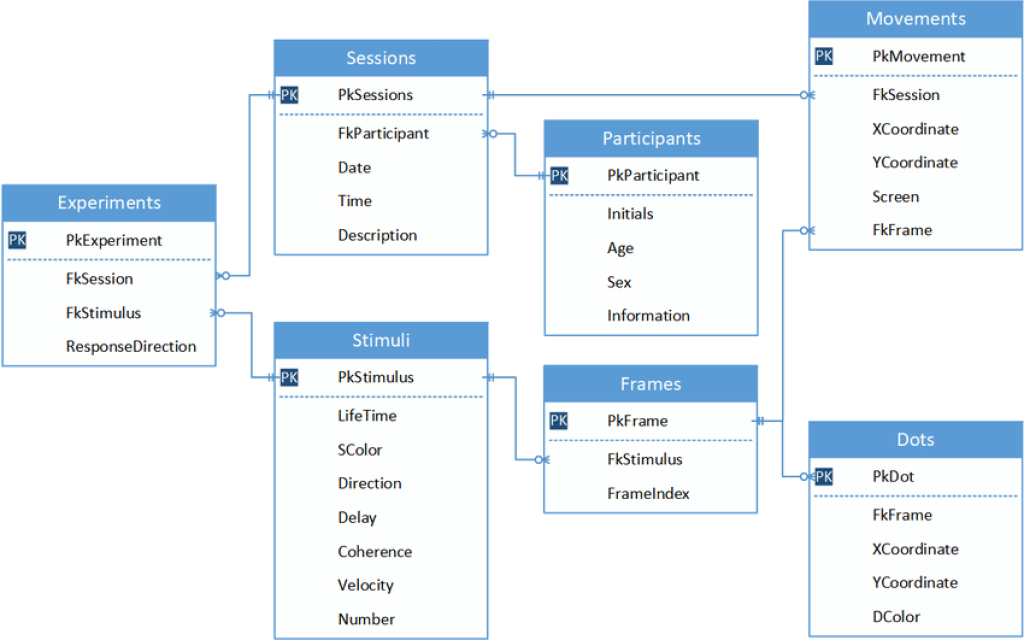
It is an information system that stores, retrieves, and modifies data. It may be used for a variety of applications such as tracking inventory or customers, maintaining public records and private information. Almost any activity involving the collection and storage of data can be seen as a database.
Table of Contents
Computer Databases:

Source: ed2go.com
Databases are computerized information storage and retrieval systems. This information is stored in a structured form by using an organized data model. The data is stored as data records and each record has the same structure with all its attributes (columns) defined under their names.
An example of a simple database would be your local telephone directory. In this database there are telephone numbers, names and addresses of people living in your area. It is stored as a book where you can find information about all the telephone numbers in one part of the directory while their names and addresses are kept together in another section.
Databases have become vital to managing information in large organizations. They store critical information about the organization’s functions and activities. It also provides support for everyday tasks such as e-mail, lending library books or tracking sales orders.
Databases are built to serve different kinds of information needs. A database system has four main components:
- Data storage and management
- User interfaces
- Data access methods
- The application software using the database system for data analysis, reporting or transaction processing.
Data Storage and Management:

Source: networkworld.com
DBMSs provide a way to define, create and maintain the physical database objects such as tables or indexes. These operations are called Data Definition Language (DDL) and Data Manipulation Language (DML). Tutorialology is a great resource to learn about DBMS.
The DDL operations provide capabilities for defining and modifying the structure of tables while DML allows insertion, deletion and updating data in the table.
For example, if you want to insert a record of customer information which includes the contact name, address and phone number in your database system. The DDL would specify what type of data has been stored and how it is structured while the DML tells the DBMS that we want to store some new records.
User Interfaces
User Interfaces are the windows, screens or reports that are presented to users so they can interact with the database management system.
Data Access Methods:

Source: unsplash.com
They allow users to select, insert, delete and update the data in the tables. The main operations of these methods are retrieve (query), insert, delete and update which you have mentioned in the previous examples.
The application software using the database system for data analysis, reporting or transaction processing.
The application software are the programs that are used by end-users to interact with the database management system. For example, if you want to view all customers who live in a certain city then you would use the query tool on your user interface or reporting tools of your application software to perform this action. Once this information is obtained, it can be presented as a table or a graph.
Other Reasons
Databases are used for many different reasons, including the following:
- To manage large volumes of data when it would be difficult or time consuming to do calculations on separate systems.
- To integrate data from several sources when this is more convenient than combining the data in one system.
- To improve the security of data sharing in an organization by controlling access to individual records.
- To provide easy and efficient access for authorized users when the number of users is large.
- To reduce errors in manual record keeping by using a computerized system where there are many duplicates or repetitions of information.
- To support the e-commerce activities in the business world through the storage and management of customers’ details.
- To provide increased functionality by linking different systems together, for example, to link student records with examination results.
Types of databases
-
Flat File Database

Source: wikipedia.org
A database with data organized as flat records (rows) containing field values (columns), with no structure for easily querying or manipulating data.
Flat file databases do not require a complex query language, and usually operate by scanning the entire table to find the necessary information. This makes them appropriate for small databases, but not large ones.
-
Hierarchical Database
A database where data is organized as a rooted tree of records, each of which may have more than one field from which the next record can be found by traversing down the tree and choosing the correct child.
The defining characteristic of hierarchical models is that data may be accessed by navigating down the tree to reach a particular record.
-
Network Database

Source: unsplash.com
A database where data is organized in two or more interconnected records, allowing for traversal between related pieces of information.
Network databases are primarily used with geographic information systems (GIS), which store maps and spatial relationships. Each record represents a geographic feature and is interconnected to other records by common spatial relationships.
-
Object Oriented Database
A database where data and the operations on data (methods) are both organized as objects, allowing for storage of object data types in addition to non-object data types.
Object oriented databases have been largely unsuccessful but are still under development, primarily due to the difficulty of representing complex data structures.
-
Relational Database

Source: researchgate.net
A set of records where there are no repeating groups of fields, and each record consists of a unique set of fields that represent some item or concept being represented by the database.
Relational databases are based on the relational model, proposed by Edgar F. Codd in 1970, using first-order predicate logic to define the operations that may be performed on the data. Data are stored as relations, or tables consisting of tuples (rows), attributes (columns), and keys which reference tuples across multiple tables.
Relational databases are designed to remain consistent even if the data are distributed among multiple physical locations, so that the different parts of a single database can be located on different computers connected by a network.
-
Time Series Database
A database where data is organized as records containing time stamps and one or more measurements for each set of time stamps.
Time series databases commonly store data from things like control systems, sensors, financial transactions, and other events where the timestamp is known. This data can be used for business intelligence or network monitoring.







